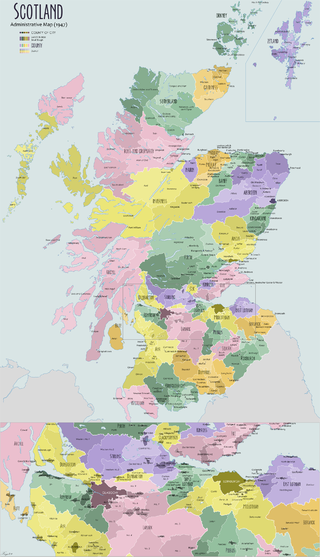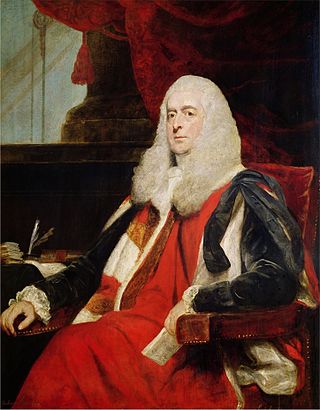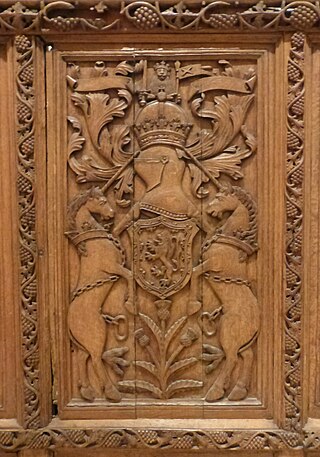
Postmaster General of the United Kingdom was a Cabinet ministerial position in HM Government. Aside from maintaining the postal system, the Telegraph Act 1868 established the Postmaster General's right to exclusively maintain electric telegraphs. This would subsequently extend to telecommunications and broadcasting.

The first minister of Scotland (Scottish Gaelic: prìomh mhinistear na h-Alba,, formally known as the First Minister and Keeper of the Scottish Seal, is the head of government of Scotland and the leader of the Scottish Government, the executive branch of the devolved government of Scotland. The first minister also serves as the keeper of the Great Seal of Scotland whilst in office.

The presiding officer of the Scottish Parliament is the presiding officer and speaker of the Scottish Parliament. The office of presiding officer was established by the Scotland Act 1998, and the elected presiding officer is a member of the Scottish Parliament who is elected by the Scottish Parliament by means of an exhaustive ballot, and is ex officio the head of the Scottish Parliamentary Corporate Body. The presiding officer is considered a figurehead of the Scottish Parliament and has an office in Queensberry House.

The secretary of state for Scotland, also referred to as the Scottish secretary, is a secretary of state in the Government of the United Kingdom, with responsibility for the Scotland Office. The incumbent is a member of the Cabinet of the United Kingdom. The Secretary of State for Scotland serves as the custodian of the Scottish devolution settlement as outlined in the Scotland Act 1998, and represent Scottish interests within the UK Government as well as advocate for UK Government policies in Scotland. The secretary of state for Scotland is additionally responsible for partnership between the UK Government and the Scottish Government, as well as relations between the Parliament of the United Kingdom and the Scottish Parliament.

The Shires of Scotland, or Counties of Scotland, were historic subdivisions of Scotland.

Alexander Wedderburn, 1st Earl of Rosslyn, PC, KC was a Scottish lawyer and politician who sat in the House of Commons between 1761 and 1780 when he was raised to the peerage as Baron Loughborough. He served as Lord High Chancellor of Great Britain from 1793 to 1801.

Colonel Sir John Sinclair, 1st Baronet,, was a Scottish politician, military officer and writer who was one of the first people to use the word "statistics" in the English language in his pioneering work, Statistical Accounts of Scotland, which was published in 21 volumes.

The office of Keeper of the Privy Seal of Scotland, one of the Great Officers of State, first appears in the reign of David II. After the Act of Union 1707 its holder was normally a peer, like the Keeper of the Great Seal. The office has remained unfilled since the death of Gavin Campbell, 1st Marquess of Breadalbane in 1922.

James Ogilvy, 4th Earl of Findlater and 1st Earl of Seafield, was a Scottish politician, prominent during the reign of Queen Anne. He was created Earl of Seafield in 1701 and was an active supporter of the 1707 Act of Union although by 1714 his opinion of the Union had changed and he proposed the first Self Government for Scotland Bill to end the Union.
Edinburghshire was a Scottish county constituency of the House of Commons of the Parliament of Great Britain from 1708 to 1801 and of the Parliament of the United Kingdom from 1801 to 1918.
The Privy Council of Scotland was a body that advised the Scottish monarch. In the range of its functions the council was often more important than the Estates in the running the country. Its registers include a wide range of material on the political, administrative, economic and social affairs of the Kingdom of Scotland. The council supervised the administration of the law, regulated trade and shipping, took emergency measures against the plague, granted licences to travel, administered oaths of allegiance, banished beggars and gypsies, dealt with witches, recusants, Covenanters and Jacobites and tackled the problem of lawlessness in the Highlands and the Borders.
Buteshire was a county constituency of the House of Commons of the Parliament of Great Britain from 1708 to 1801 and of the Parliament of the United Kingdom from 1801 to 1918.
The King's and Lord Treasurer's Remembrancer is an officer in Scotland who represents the Crown's interests in bona vacantia, ultimus haeres and treasure trove.

Adam Cockburn, Laird of Ormiston, Lord Ormiston, was a Scottish administrator, politician and judge. He served as Commissioner for Haddington Constabulary in the parliaments of 1681-2 and 1689, and in the conventions of 1678 and 1689. He was appointed Lord Justice Clerk on 28 November 1692.
Sir Ernest MacLagan Wedderburn was a Scottish lawyer, and a significant figure both in the civic life of Edinburgh and in the legal establishment. He held the posts of Professor of Conveyancing in the University of Edinburgh (1922–35), Deputy Keeper of the Signet (1935–54), and Chairman of the General Council of Solicitors (1936–49), the forerunner to the Law Society of Scotland, and chaired the latter 1949/50. He was also an enthusiastic amateur scientist, and first Treasurer then Vice President of the Royal Society of Edinburgh.
Sir David Wedderburn, 1st Baronet was a Scottish businessman and Tory politician. He was Postmaster General for Scotland 1823-31 and a member of two London militias before that.
James Sinclair, 12th Earl of Caithness (1766–1823) was a Scottish noble, Earl of Caithness and chief of the Clan Sinclair, a Highland Scottish clan.
John Pringle, Lord Haining was a Scottish lawyer, politician, and judge. His ownership of a large estate near Selkirk secured him a seat in the Parliament of Scotland from 1702 until the Act of Union in 1707, and then in the House of Commons of Great Britain from 1707 until he became a Lord of Session in 1729.
Sir Patrick Johnston (1650–1736) of Edinburgh was a Scottish merchant and politician who sat in the Parliament of Scotland from 1702 to 1707 and as a Whig in the British House of Commons between 1707 and 1713. He was Lord Provost of Edinburgh three times from 1700 to 1702, from 1704 to 1706, and from 1708 to 1710.











